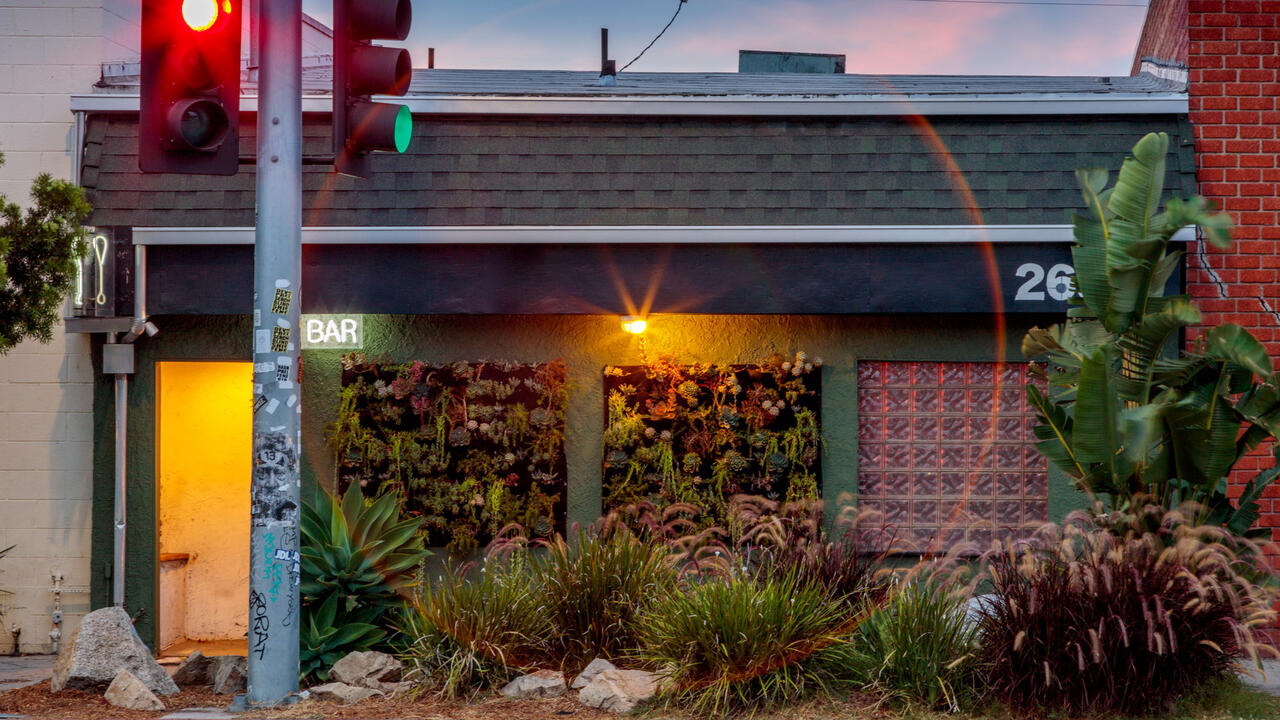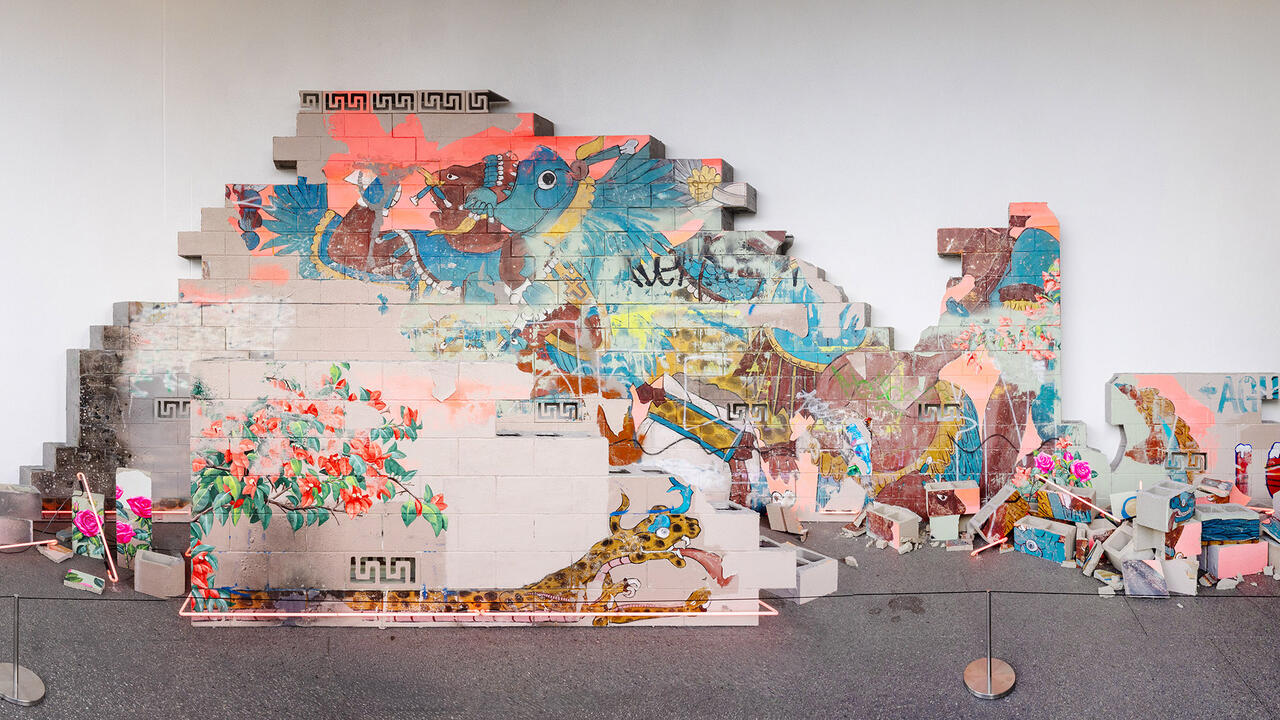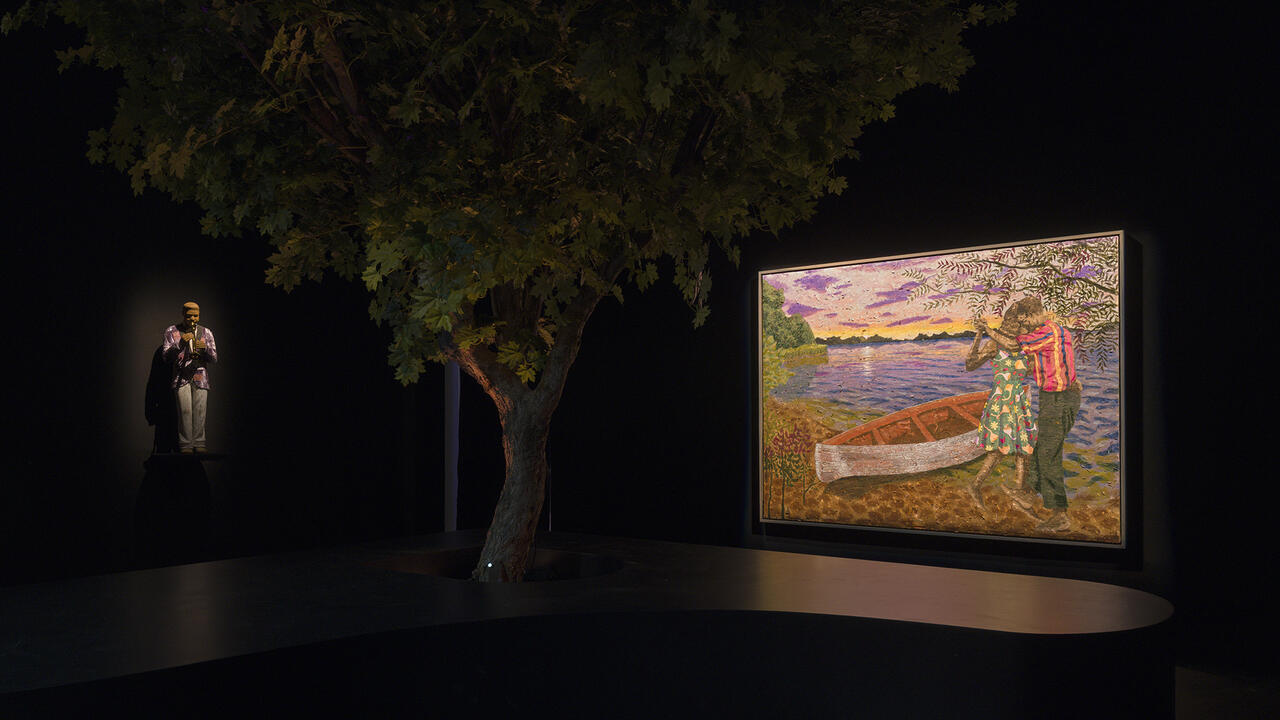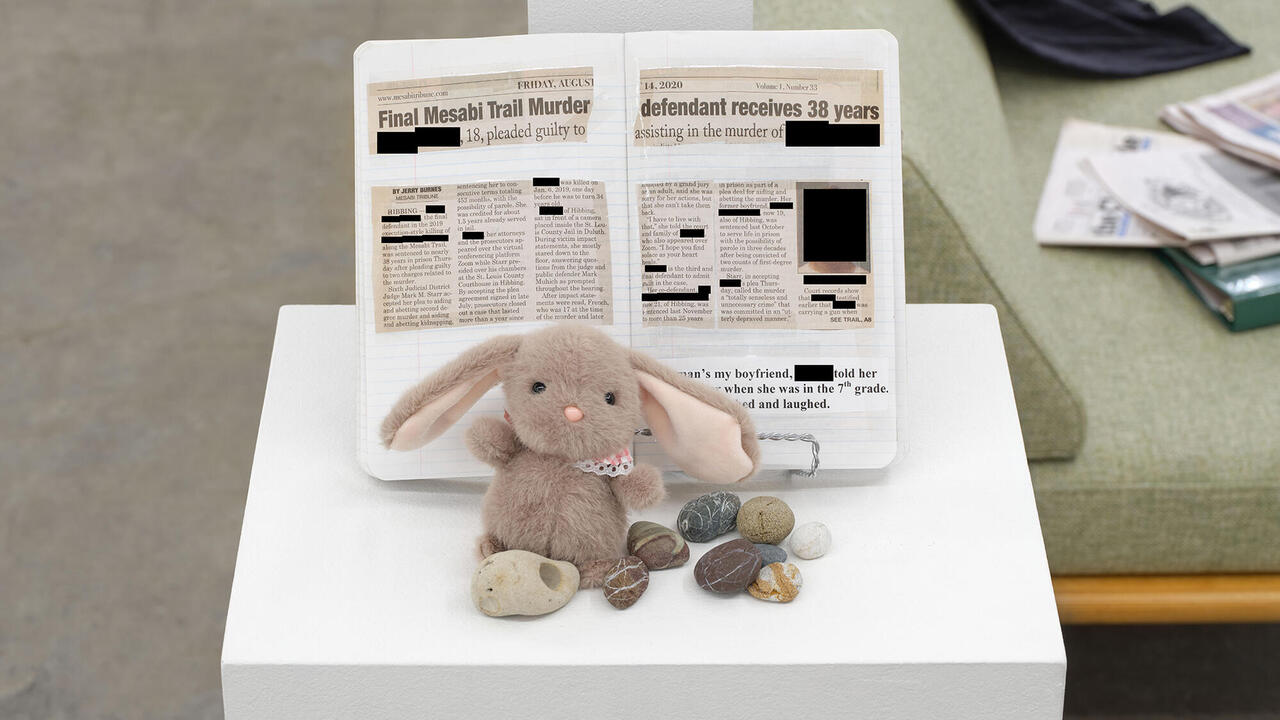Robert Colescott’s Carnival of Vices
In the late artist’s paintings, on view at Blum & Poe, Los Angeles, good is evil, right is wrong and no one is innocent
In the late artist’s paintings, on view at Blum & Poe, Los Angeles, good is evil, right is wrong and no one is innocent

The last work in Robert Colescott’s exhibition at Blum & Poe is a drawing that, for me, comes close to unlocking the entire show. In it, God – a long-haired, bearded white man – flanked in his throne by two jackbooted, fascistic angels, directs Martin Luther King (identifiable by the gunshot wound in his chest, and also a helpful label) towards hell, where a black-skinned Lucifer, grinning grotesquely, beckons him down.
In Colescott’s art, good is evil, right is wrong, authority is corrupt, and no one is innocent. Heavenly Host & MLK (1971) was made after Congress ignored a petition with millions of signatures to inaugurate a public holiday commemorating King’s assassination in 1968. (It was not until 1983 that it relented.) Colescott’s cartoonish drawing is bitterly ironic, but also somehow resigned to the injustice: this is reality, he seems to say, and you’d better get used to it.

Before arriving at this acerbic and depressing coda, viewers peruse a carnival of bad taste, exploitation, misogyny, racism, sarcasm and innuendo. Colescott often features himself in his work, although only one painting in this exhibition includes the balding, grey-bearded African-American figure that is recognizably him. The painting is a premonition: Portrait of the Artist at 85 (1978) was done when Colescott was only 53; he died in 2009, at 83, still doing what he is doing in this work – painting the female form, which is usually naked, and often white. Much has been written about the sexualization of the black body by the white gaze. Less has been written about its inverse, a situation that Colescott commonly describes in his narrative tableaus. In Peeping Tom (1973), a blonde woman in curlers and a negligee gets ready for bed, while a black man presses his face and hands to the window. Both are grotesques – the man has the clownish lips of racist caricatures – but the knowledge that Colescott was himself married four times to white women complicates an easy read. He virtually dares the viewer to take offense at the suggestion of miscegenation. What is legitimately offensive about Colescott’s work is that women almost only ever appear as sex objects. He used the defence that he was painting in the grand tradition, from which black bodies have been historically excluded, wherein women were often nude. That, of course, is conservative baloney.

While in the 1980s Colescott mellowed into a lush, gestural painting style – revealed here in otherworldly bathing scenes from 1984–86 – his illustrational technique in the ’70s arguably owes most to end-of-the-pier smutty postcards. At best, it is stridently democratic, a precursor to the anti-hierarchical mode championed in the ‘“Bad” Painting’ exhibition curated by Marcia Tucker in 1978. While it may use the language of humour, however, most of the time it is not actually funny. Take Moonlighting in Porno: Sex on the Slope (1976), a technically virtuosic composition with the cut-out word ‘Starlet’ protruding in a font of pink penises. It shows a black-skinned director in jodhpurs shouting through a bullhorn at a buxom pink woman, undressed and grinning, while another man advances on her from behind. The painting looks as if it should somehow be funny; I don’t get the joke.
In 1987, Lowery Stokes Sims called Colescott’s work ‘“questionable”’, with scare quotes as if the opinion were not her own. But it really is – questionable, that is – and a major part of appreciating his work involves the questioning of pictures and their motivations. It is fruitless, however, to try to map Colescott’s subject position as a heterosexual, pale-skinned African-American man onto paintings that gleefully appropriate both sexist and racist tropes, as if doing so would clarify the degrees of critical irony involved, or excuse all his transgressions. The artist, who was fundamentally opposed to virtue signalling, would probably have said this was fine with him.
Robert Colescott runs at Blum & Poe, Los Angeles until 28 April.
Main image: Robert Colescott, Kitchen Assassination, 1971 (detail), acrylic on Egyptian linen, 199 x 150 x 4 cm. Courtesy: © Estate of Robert Colescott /Artists Rights Society (ARS), New York and Blum & Poe, Los Angeles/New York/Tokyo























